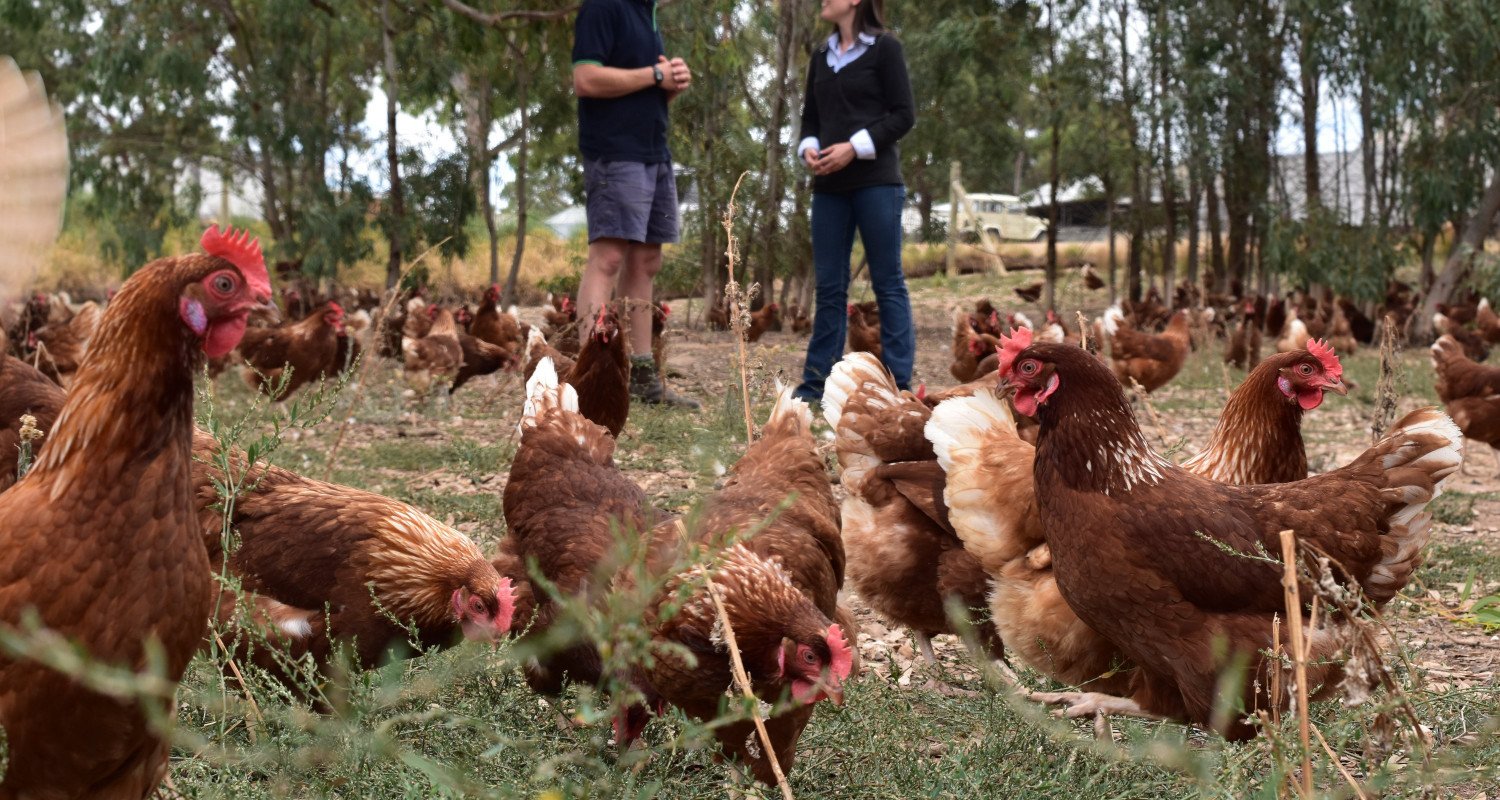
New biosecurity manual to help farmers protect hens from avian influenza
New biosecurity manual to help farmers protect hens from avian influenza
- Publication
- Categories
- Reading time 3 minutes
The Australian Egg Corporation Limited (AECL) launched a comprehensive new biosecurity manual to help egg farmers protect their hens from serious diseases, such as avian influenza, at an egg industry conference in Hobart today (18 November 2015).
AECL Managing Director, James Kellaway, said the release of the National Farm Biosecurity Technical Manual for Egg Production, demonstrated that the Australian egg industry, in conjunction with Animal Health Australia, is helping farmers proactively manage the risk of infectious diseases on egg farms.
“It is critical AECL provide farmers with the service of creating such manuals to help ensure that serious avian influenza outbreaks, like the recent US outbreak that infected more than 40 million hens, do not occur here,” Mr Kellaway said.
“AECL is proud to have worked with Animal Health Australia and one of Australia’s leading poultry veterinarians, Dr Peter Scott, in developing this responsible and comprehensive approach to biosecurity risk management,” Mr Kellaway said.
Dr Peter Scott, who launched the manual at the 22nd AECL Industry Forum in Hobart today, said it encompassed all aspects of egg farming including the transport and movement of eggs and egg products to other farms, grading and processing establishments.
“The release of this manual and the adoption of its best practices on-farm demonstrate our industry’s serious, on-going commitment to preventing the introduction and spread of infectious diseases which impact flocks or have public health significance,” Dr Scott said.
The new manual complements the Code of Practice for Biosecurity in the Egg Industry Second Edition. It is already being used by layer hen farmers across Australia to assess risk and provide measures to control the incursion of not only emergency animal diseases such as avian influenza but also those endemic diseases that affect productivity, performance and in some cases organisms of food safety significance.
“As a responsible industry it is essential that a risk assessment be conducted for each enterprise to establish what level of risk exists in each phase of its operations and to identify and implement control measures appropriate to these levels of risk,” he said.
“Individual egg farmers are able to incorporate these minimum standards on-farm and ensure compliance via an auditable checklist also included in the manual,” he said.
Biosecurity and quarantine are integral parts of any successful poultry production system. Biosecurity refers to those measures taken to prevent or control the introduction and spread of infectious agents to a flock. Such infectious agents, whether they cause clinical or subclinical disease, significantly affect hen health and welfare, and reduce the productivity, profitability and long term financial viability of a poultry operation.
The manual was created as a result of AECL’s commitment to government and industry to help reduce the risk of entry and spread of Emergency Animal Diseases (EAD).
For more information and additional tips about on-farm biosecurity for commercial egg production, visit the Farm Biosecurity Program’s egg industry page: www.farmbiosecurity.com.au/industry/eggs.
The National Farm Biosecurity Technical Manual for Egg Production can also be downloaded from the AECL website (see below).
AECL is the Industry Services Body for the Australian egg industry that is funded through statutory levies collected under the Egg Industry Service Provision Act 2002 and Australian government funds for the purposes of ‘approved’ R&D.
 >
> 
